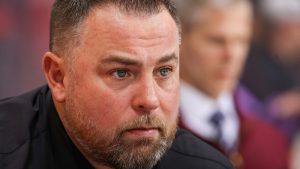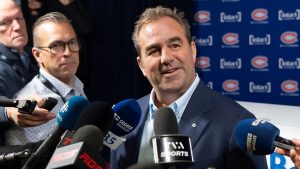As the Ottawa Senators approach their 30th anniversary in the NHL and the 2022 draft, it is the perfect time to reflect on 30 years of Ottawa drafting players.
Over those three decades and nearly 250 players selected, one glaring feature stands out above all — the Senators' inability to draft, develop and keep starting goaltenders.
And lest you think this is one reporter’s fancy on a summer day, consider this as well: The Senators acknowledged to me that the organization undertook a major internal study of this issue a few years ago, having identified it as a problem to address.
While not wanting to share their study findings, for obvious, competitive reasons, the Senators did share some of the trends and data examined — such as, where are the best goalies coming from? In what rounds are they being drafted?
In recent years, Ottawa has upped its game as far as making goalies more of a priority in the draft.
Senators general manager Pierre Dorion said in an interview that the goalie question has intrigued him for years as a scout and eventual GM.
Ottawa’s chief scout Trent Mann has a particular passion for drafting and developing goalies, in part because he was a goaltender before he turned his attention to scouting players.
There is no sure formula. Consider that the two premier NHL goalies at the moment are Andrei Vasilevskiy and Igor Shesterkin. Vasilevkiy was a mid-first round pick (19th overall, by the Tampa Bay Lightning) while Shesterkin went in the fourth round, 118th overall, by the New York Rangers.
For years, most NHL clubs viewed goaltenders as picks they didn’t want to “waste” an early selection on because their development was deemed too long of a course, unpredictable. Grab one in the late rounds and hope it works out.
The Senators' own history illustrates the challenges of hitting a home run with a high pick at the position. Check out Ottawa’s full goalie draft chart below. Over their first 17 years at the draft, only twice did the Senators draft a goalie in the first two rounds.
First, Mathieu Chouinard, first round, 15th overall in 1998. Ottawa liked Chouinard so much they drafted him twice — he re-entered the draft in 2000 and the Sens took him 45th overall. Chouinard played just one game in the NHL and it wasn't with Ottawa.
The other pick from the top two rounds was Simon Lajeunesse, taken 48th overall in 1999. He also played just one NHL game and it was with Ottawa.
Incredibly, none of the 23 goaltenders drafted by the Senators has played as many as 150 games for Ottawa, and just two played 100-plus games for the Senators:
1. Ray Emery, taken in the fourth round of the 2001 draft, 99th overall. Emery played 134 games for Ottawa and 287 overall in the NHL.
2. Brian Elliott, making the case for the "late-round-flyer" pick, was selected in the ninth round, 291st overall, in 2003. Elliott made 130 appearances for the Senators and has played an astounding 521 NHL games, despite hearing 290 names picked before him on draft day. Elliott is still going. He backed up Vasilevskiy for the Lightning this season.
SENATORS GOALIE DRAFT HISTORY
SENS GOALIE DRAFT FACTS, FIGURES
Over the course of 30 drafts between 1992 and 2021, the Senators have selected 241 players, and just 23 were goalies. That adds up to Ottawa picking goalies about once out of every 9.5 picks. In 11 of the 30 drafts, the Sens did not pick a goalie.
Only once did the Senators use a first round pick on a goalie (Chouinard). The most typical round in which Ottawa has selected a goalie has been Round 3 — six times they opted for a netminder in this round. They drafted four from Round 6 and four from Round 2.
STUDY SHOWS THE SENS DIDN'T DRAFT ENOUGH GOALIES
Of course, the simplest solution to finding goalies in the draft is to pick more of them. Improve the odds.
“When I took the position I’m currently in, we analyzed a bunch of years of all NHL teams and what they’ve done with their goalies,” Mann says. “And we looked at teams that were having success, and why they had success.”
According to Mann, the Senators looked at how often a particular franchise was drafting goaltenders, from what rounds and what countries. Were they developed in junior North American hockey or Europe?
“We kind of went through the whole gamut to better understand — how do we have more success and the one thing we did find is that we didn’t pick frequently enough,” Mann says.
The Senators still use this goalie study document and update it each draft as the Senators and their rivals continue to draft goalies. Interestingly, the Senators didn’t draft a goalie in 2021, but they made two relatively high goaltender picks prior to that — Mads Sogaard in the second round of the 2019 draft and Leevi Merilainen in the third round, 2020.
Note as well that both of these goaltenders are from Europe, another strong trend.
WHY OTTAWA GOALIES COME AND GO
Goaltenders need more time to develop than any position player, which can lead to the revolving door of goalies, seen here and elsewhere.
With few exceptions (Vasilevkiy, Shesterkin, Carey Price), goalies often become established in the NHL by age 26 or 27, Mann says. Before that happens, they run out of contract options, need to clear waivers and often get scooped by other teams. Or, a team has to make a decision on extending a goaltender and opts to trade him instead.
Mann points to the brief period during which the Senators had three titans trying to share the same crease: Ben Bishop, Robin Lehner and Craig Anderson, from 2012 until the 2013 trade deadline. Bishop was the odd man out and went on to a lengthy career with Tampa Bay and Dallas. Lehner was dealt to Buffalo in 2015.
You couldn’t keep all three because one of them’s going to get picked off waivers,” Mann says. “So you have to make a trade or you’re going to get nothing for them.”
The Senators have benefited from being on the other end of that scenario. They were able to grab Anton Forsberg on waivers in March 2021 and at the moment, Forsberg is Ottawa’s No. 1 goalie, having been signed to a new three-year contract. It took him to age 29 to get a starting role.
Interestingly, the three-headed monster has reared its head again. The Senators currently have three goalies under contract, suggesting something has to give. Matt Murray and Forsberg are the veterans, and prospect Filip Gustavsson moves to a one-way deal this coming season and would need to clear waivers to be sent down.
The point from Mann is this: “goalies tend to work out (mature) on their second or third team because now they’re at the age where they’re ready to play in the NHL.
“But because of their contract status, they moved on. Look at Forsberg. It’s not like Columbus didn’t want him anymore — it started with the contract and the nature of the position.”
Mann understands goaltending better than many scouts, because he was a goaltender himself. He played three seasons in the CCHL with the Pembroke Lumber Kings and Ottawa Jr. Senators and played pro hockey briefly in the CHL and UHL.
The Senators have another former goalie on staff with even more experience at the position than Mann. Bob Janecyk played 110 NHL games with Chicago and L.A. His claim to fame with the Senators: Janecyk kept an eye on Patrick Lalime toiling in the minors after a contract dispute following a strong rookie year with Pittsburgh in 1996-97. Identified by Janecyk as a goaltender the Sens should pursue, Ottawa acquired Lalime’s rights from the Anaheim Ducks and just like that found their starting goaltender for the next six years, from 1999 to 2004.
Janecyk was also a factor in selecting Joey Daccord late in the 2015 draft. Daccord was taken by the Seattle Kraken in the expansion draft.
The Senators top four all-time leaders in games played as a goaltender were all acquired from other organizations: Anderson (435 GP), Lalime (283GP), Damian Rhodes (181 GP) and Ron Tugnutt (166 GP).
PATIENCE REQUIRED: DORION
Dorion concurs with Mann that the extended growth curve of goaltenders is a complicating factor, but also one that calls for patience from team managers and coaching staffs.
“You have your exceptions, a Marc-Andre Fleury, or Vasilevskiy or maybe John Gibson, who have an impact before they’re 23, but for the most part goalies don’t reach their prime till they’re at least 25,” Dorion says. “Sometimes, it’s just being patient, trying to work with them.
“I can only speak for this organization since the Erik Karlsson draft (2008) because that was my first draft with Ottawa, but we have put an onus on (goalie development) more recently."
Whether the team drafts or trades for a young goalie, they must be handled with care, Dorion says. The Senators feel they have two strong goalie coaches in Zac Bierk and Justin Peters (Belleville).
We traded for Gustavsson, he was a big part of that (Derick) Brassard deal (in 2018),” Dorion says. “It’s a matter of showing patience with him. He has had some good years and some bad years, so what will he be at the end of the day? Will he be a legit No. 1, a backup or something in between? Or will he just be a minor leaguer?
“It’s just trying to figure out what he will be.”
A couple of years ago, Ottawa thought Marcus Hogberg, a third round pick by the Sens in 2013, might be a fixture here. He fizzled out in 2020-21 and is no longer in the NHL.
MENTAL ASPECT
Part of the challenge of drafting teenage goaltenders is assessing their poise and mental makeup.
“Goaltending is not just talent, it’s mental (strength),” Dorion says. “You’re the last line of defence. Some guys take getting scored on harder than others. Some guys can shake it off. You don’t know how the person develops from the time they’re 18 to age 22.
“Goalies don’t mature right away.”
Work ethic is another key ingredient.
“Regardless of position, you have to be competitive and you have to have high-end work ethic to get to another level,” “Mann says. “For me, those are important qualities. If they have that, then there’s a chance they’re going to be a pro goalie at some level, depending how good they are.
"The relationship they have with your goaltending (coaches) is important ... so there are a lot of pieces that have to be coordinated.”
Let’s not forget that a team needs to catch a break once in a while, to land that special goaltender.
“There’s always an element of luck when you’re drafting people,” Mann says. “But there’s more luck involved with goalies because they’re a bit unpredictable.”
It isn’t essential that the Senators’ goalie of the future is drafted and developed in-house, but it would be a nice change.
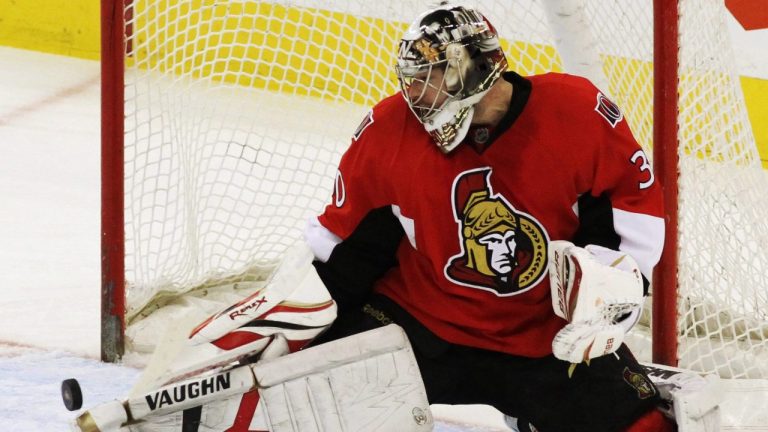

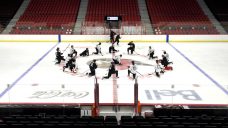
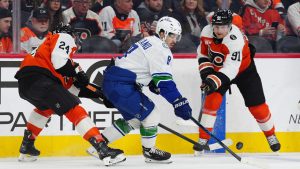
 4:46
4:46